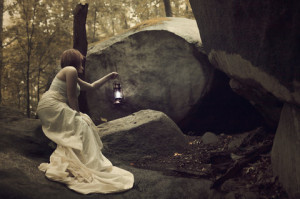Photography as a Balm for Mental Illness
JULY 24, 2014 To the casual observer, Danielle Hark was living an enviable life, with a devoted husband, a new baby and work she enjoyed as a freelance photo editor. But she was so immobilized by depression that she could barely get out of bed. Her emotional state could not be explained in postpartum terms – she had suffered from debilitating depression for most of her life, and ultimately received a diagnosis of bipolar disorder when her daughter was a year old.
To the casual observer, Danielle Hark was living an enviable life, with a devoted husband, a new baby and work she enjoyed as a freelance photo editor. But she was so immobilized by depression that she could barely get out of bed. Her emotional state could not be explained in postpartum terms – she had suffered from debilitating depression for most of her life, and ultimately received a diagnosis of bipolar disorder when her daughter was a year old.
“I thought about killing myself for the first time in seventh grade,” said Ms. Hark, now 33. “I went from therapist to therapist and medication to medication, not comfortable with anyone or any drugs.”

Two years ago, on one of her worst days, something different happened. “I was literally on the bathroom floor, bawling,” she said. “But I picked up my phone and started taking pictures – paint peeling on the door, reflections in the mirror. It just took a couple of minutes for me to become more present, breathing more normally. It was a really important moment.”
That experience led her to create the Broken Light Collective, an online gallery intended to provide a supportive environment for photographers affected by mental illness. The site now has contributors from 150 countries, struggling with disorders like anxiety, depression, obsessive-compulsive disorder, bipolar disorder, schizophrenia, posttraumatic stress, borderline personality disorder and eating disorders. This summer, the group had its first live show, “From Darkness to Light,” at the Fountain Gallery in New York City. (The show runs through Aug. 13.)
“For me, it’s the act of shooting that helps,” Ms. Hark said. “It doesn’t matter how the photos come out. It’s a mindfulness process that brings me into my body. I’m not worrying about the past or the future, just looking through the lens. Some people analyze their photos and use them to explore their lives. There are a lot of possibilities that are therapeutic.”
An artistic activity such as photography is “literally and figuratively enlivening,” according to Ellen J. Langer, a professor of psychology at Harvard and author of “On Becoming an Artist: Reinventing Yourself Through Mindful Creativity.” “When people are depressed, they tend to retreat from the world. Noticing things in the camera puts you in the present moment, makes you sensitive to context and perspective, and that’s the essence of engagement. I have years of research telling us how good that is for health and well-being.”

Introducing the exhibit on the the gallery’s website is a photo of a young woman dressed in white, holding a glowing lantern in a wooded area. It was taken by Samantha Pugsley, a 25-year-old photographer in Charlotte, N.C., who exclusively shoots self-portraits, a theme that evolved in response to her diagnosis of generalized anxiety disorder.
“I was having a day where I couldn’t do anything without feeling anxious,” she said. “I just sat down with my camera and started taking pictures of myself, crying on the edge of my bed. I could see my pain instead of feeling it. It was like finding evidence of the way it feels inside.”
One reason photography may provide a salubrious effect is that making the effort required to take the pictures and seeing the positive results build a kind of reward system in the brain, according to Kelly Lambert, a behavioral neuroscientist and chairwoman of the psychology department at Randolph-Macon College.
“In the laboratory, my students and I have designed experiments in which rats are trained to ‘work’ for their food rewards” – in this case, Froot Loops, said Dr. Lambert, the author of “Lifting Depression.”
“These rats are compared to a group that is just given the Froot Loops – call these ‘trust fund’ rats. We have found brain changes, as well as stress hormone changes, that are consistent with enhanced neurobiological resilience in the effort-based animals. Generalized to humans, we would predict these rats would be protected against the onset of depression. It’s about learned persistence as opposed to learned helplessness that is associated with depression.”
Broken Light Collective makes no medical or treatment claims; Ms. Hark and many of the contributors to her site still keep the demons at bay with talk therapy and medication. But the site offers a support system free from the shame that often accompanies their diagnoses.
“There’s a definite stigma behind any type of mental illness,” said Jacque Stukowski, 47, a graphic designer in Chicago with bipolar disorder. “Instead of hiding, I wanted to be transparent. It’s great to be part of a community where you’re sharing and educating others. My illness isn’t always a negative thing.”
Ms. Stukowski said that her photographs were frequently visual metaphors, like the image that was used in a slide show for this summer’s exhibit.
“It was a picture of a broken-down building, the doors rusty and falling off their hinges,” she said, an apt representation of a depressed person’s state of mind. “But I’m getting less rusty, or at least finding beauty in the rust.”
Credit :NYtimes.com http://well.blogs.nytimes.com/2014/07/24/photography-as-a-balm-for-mental-illness/

